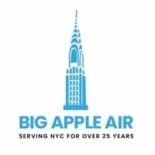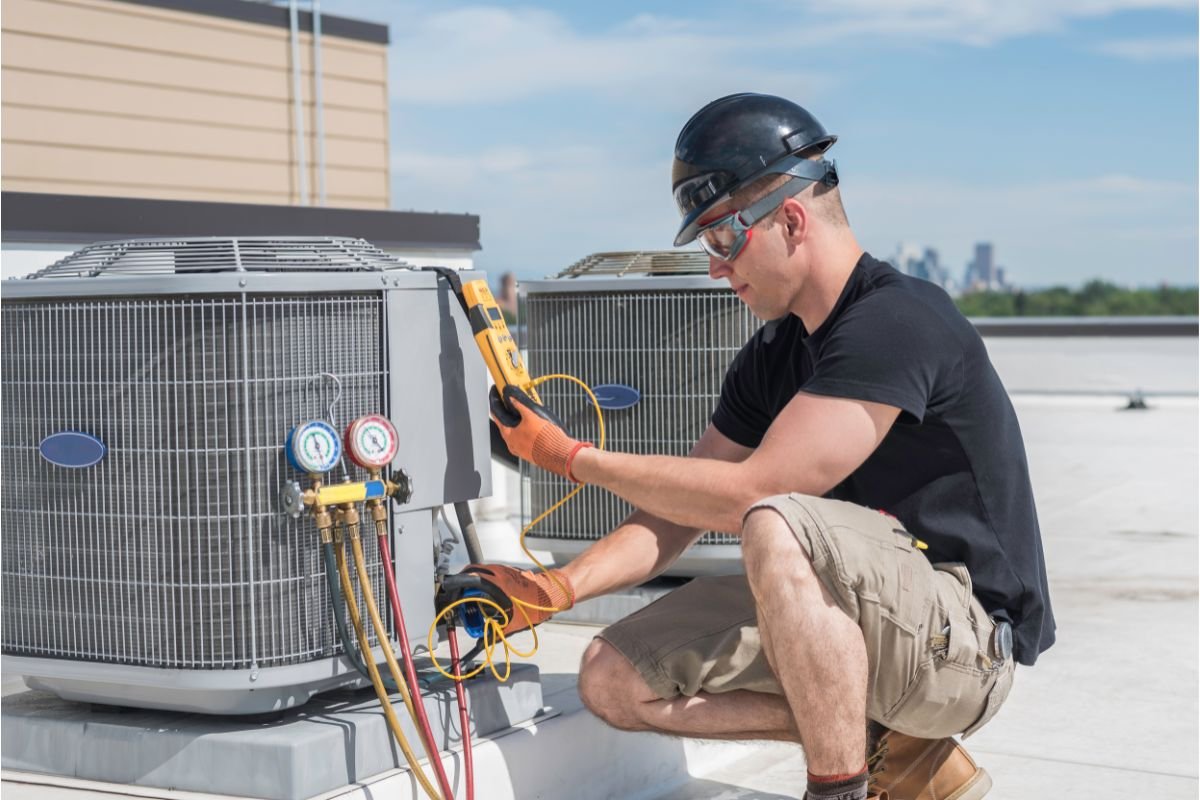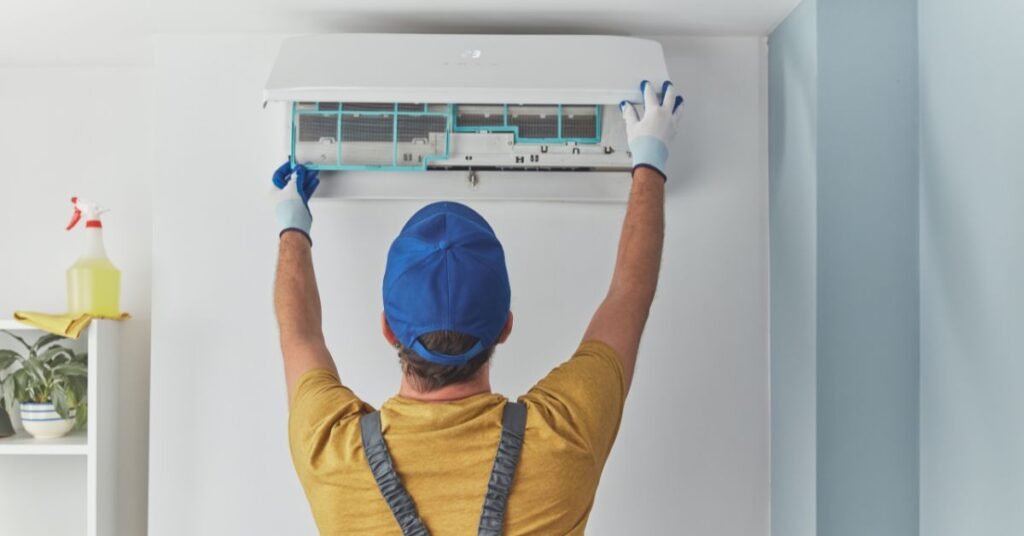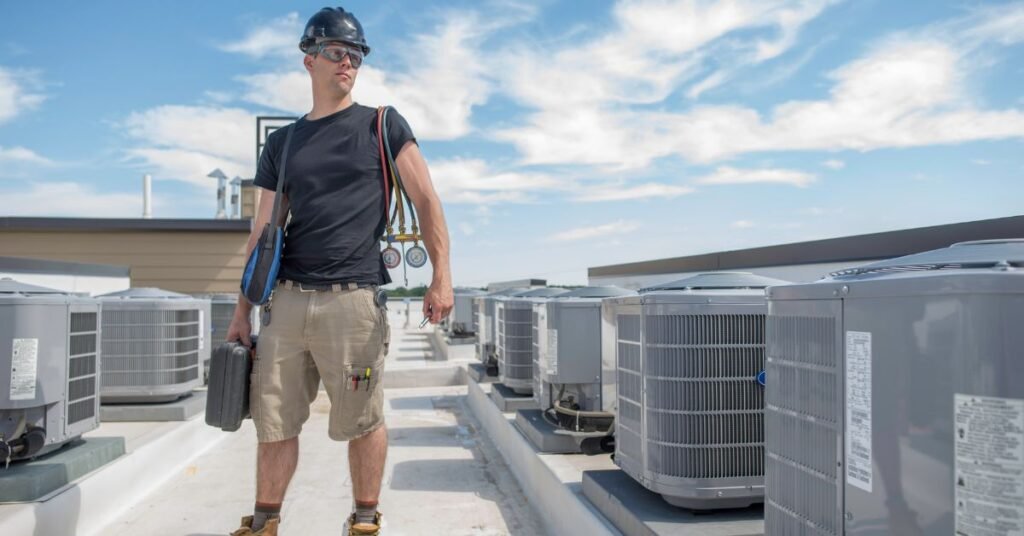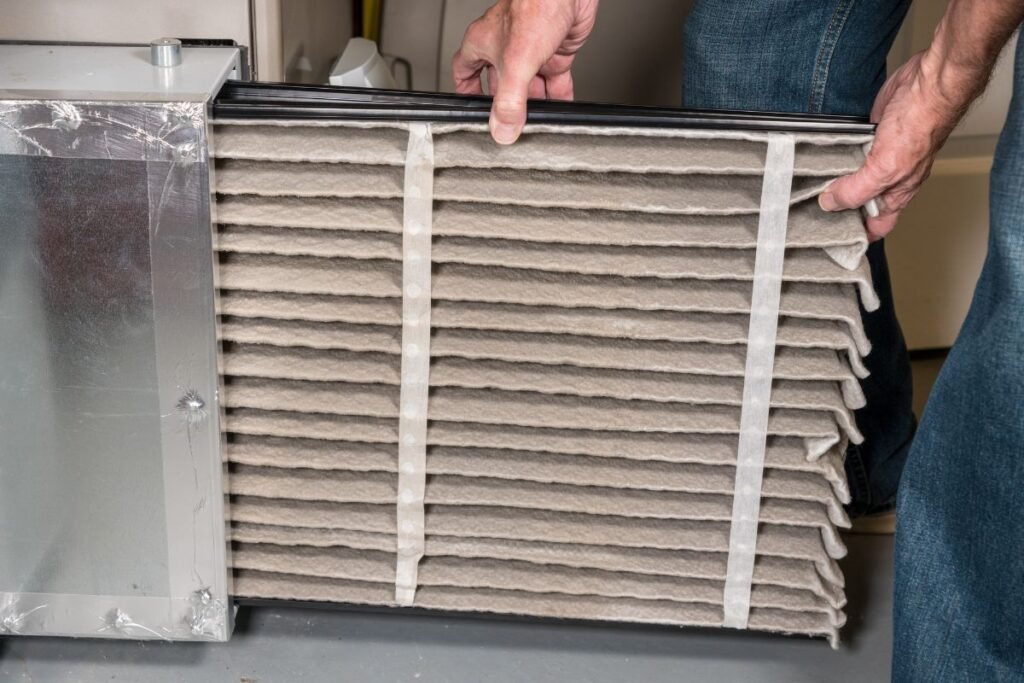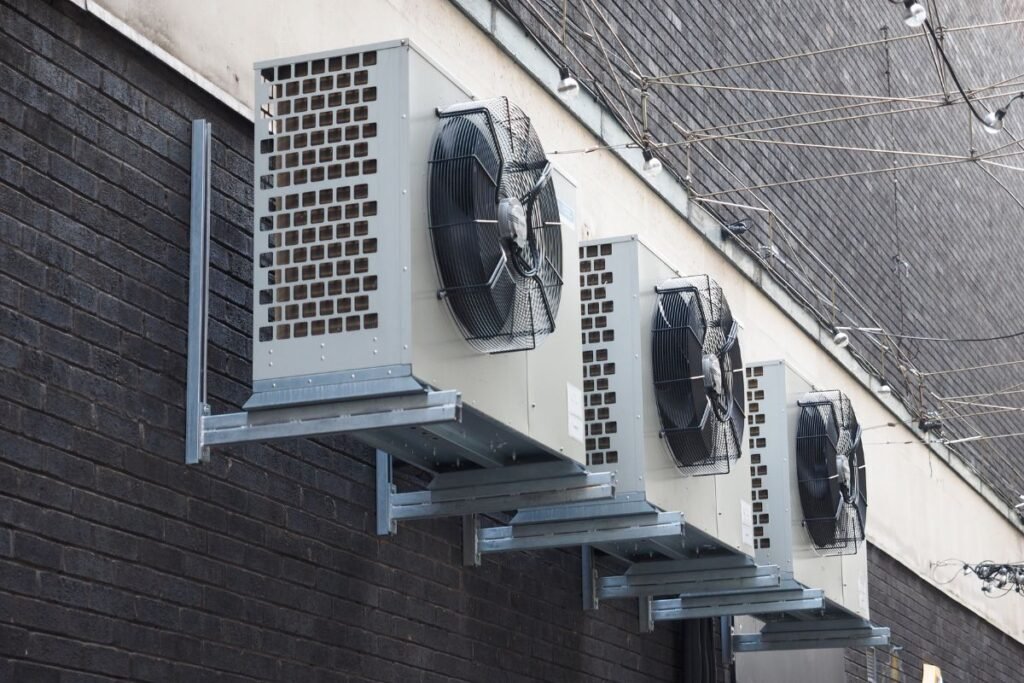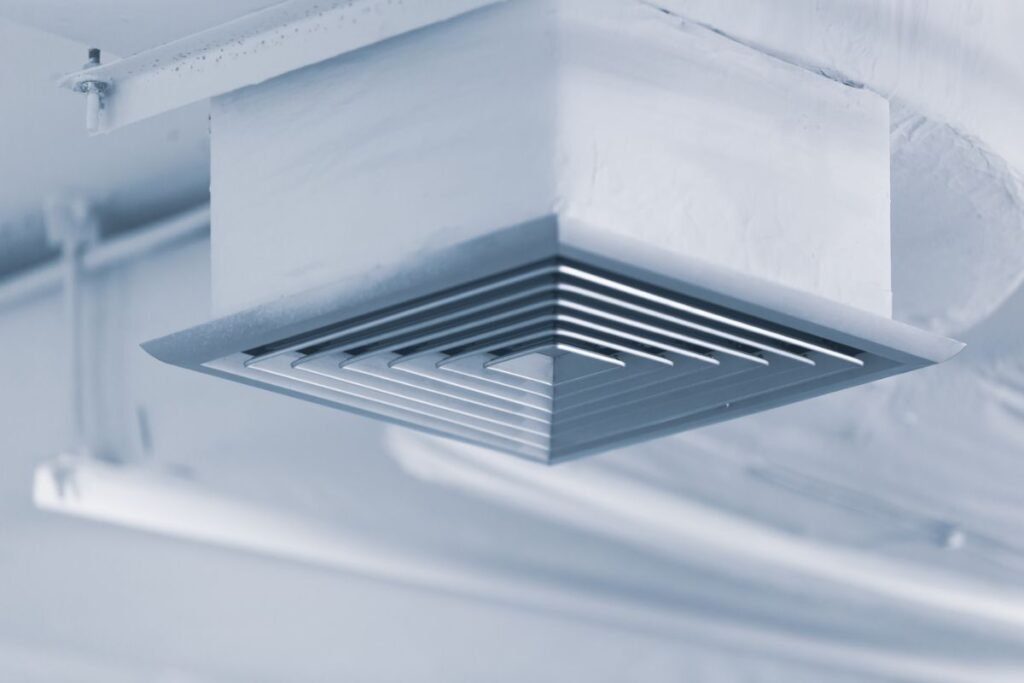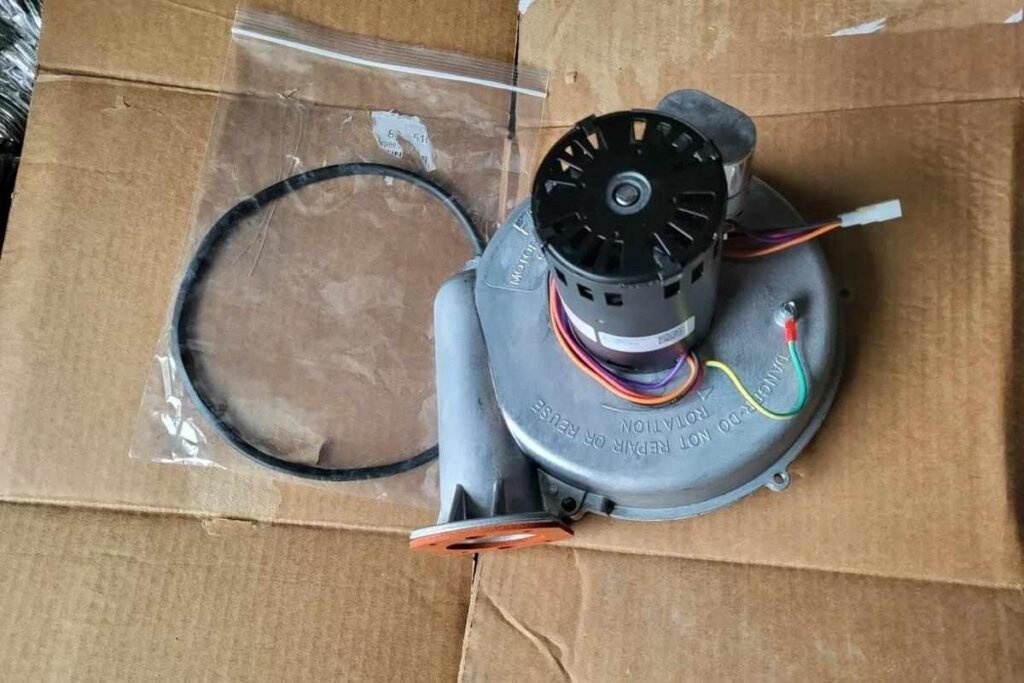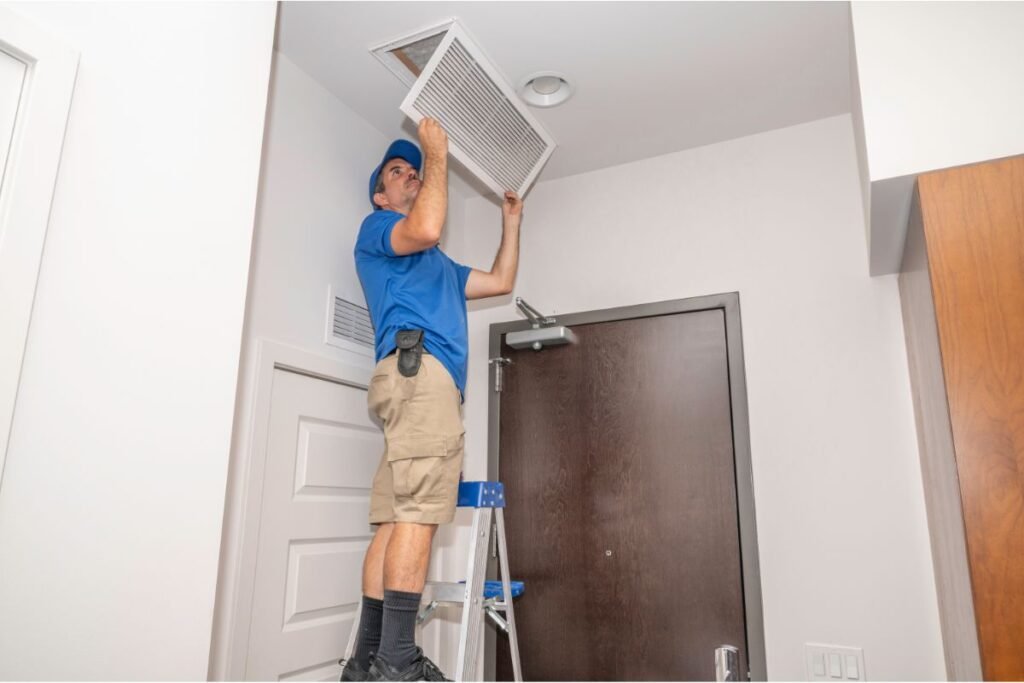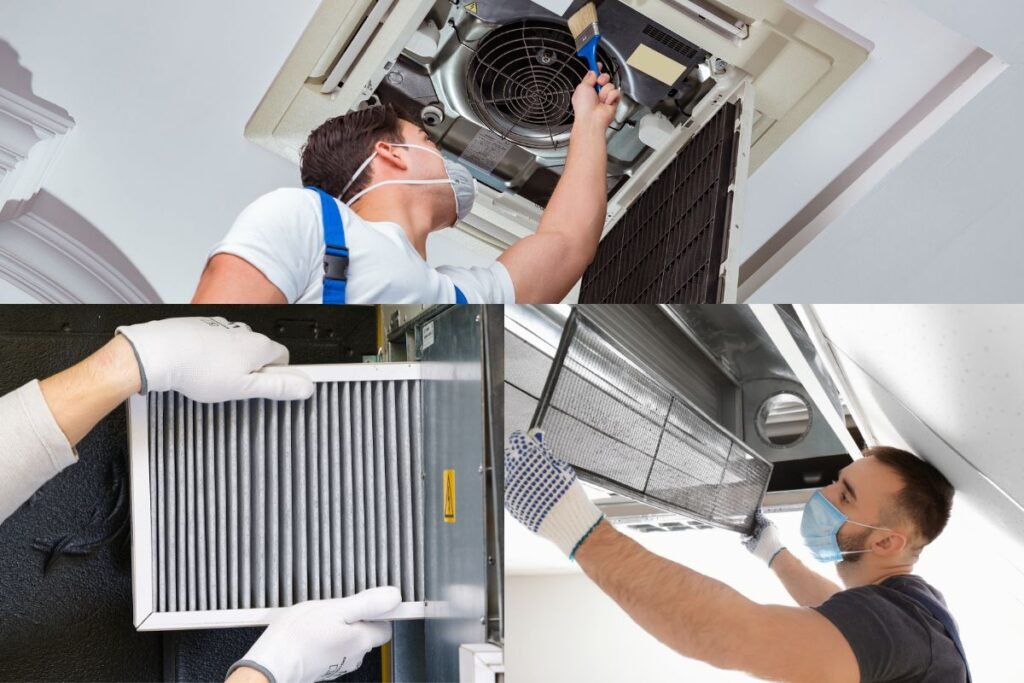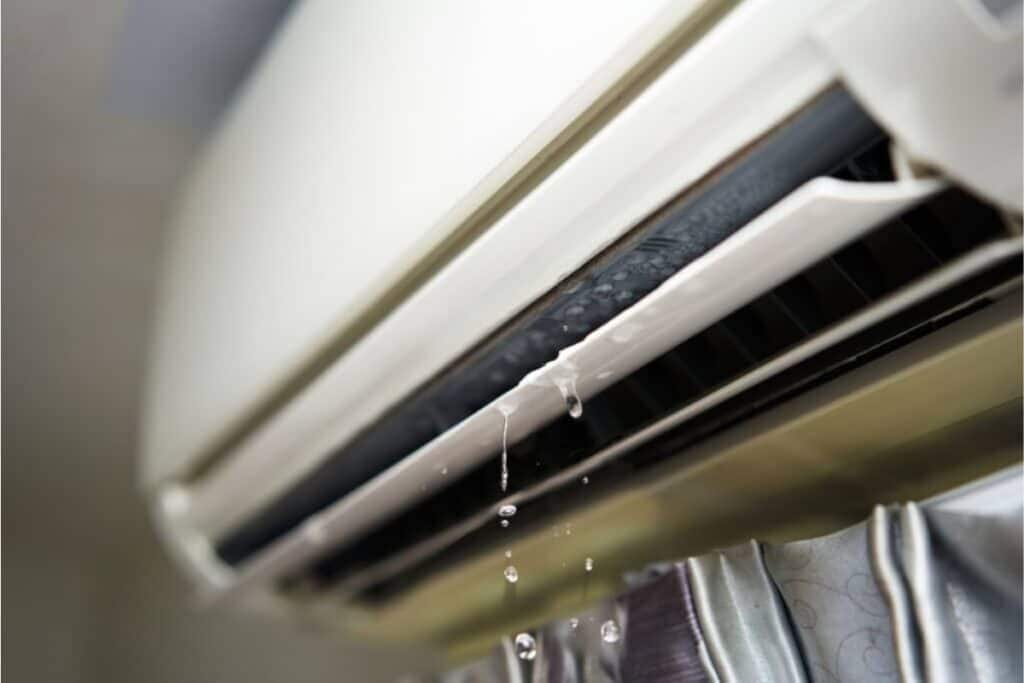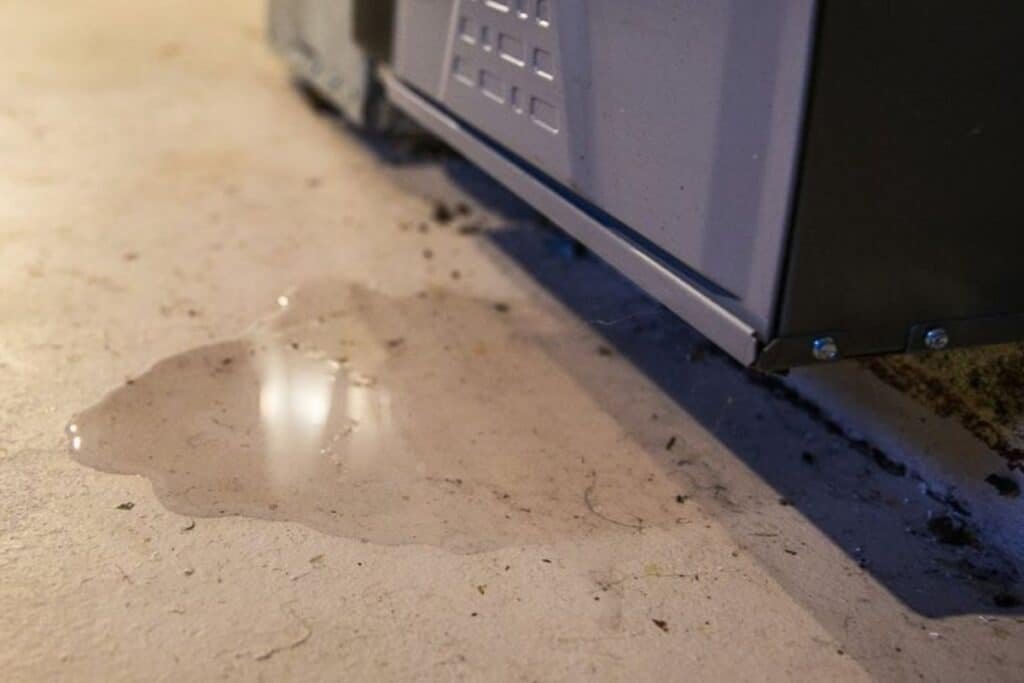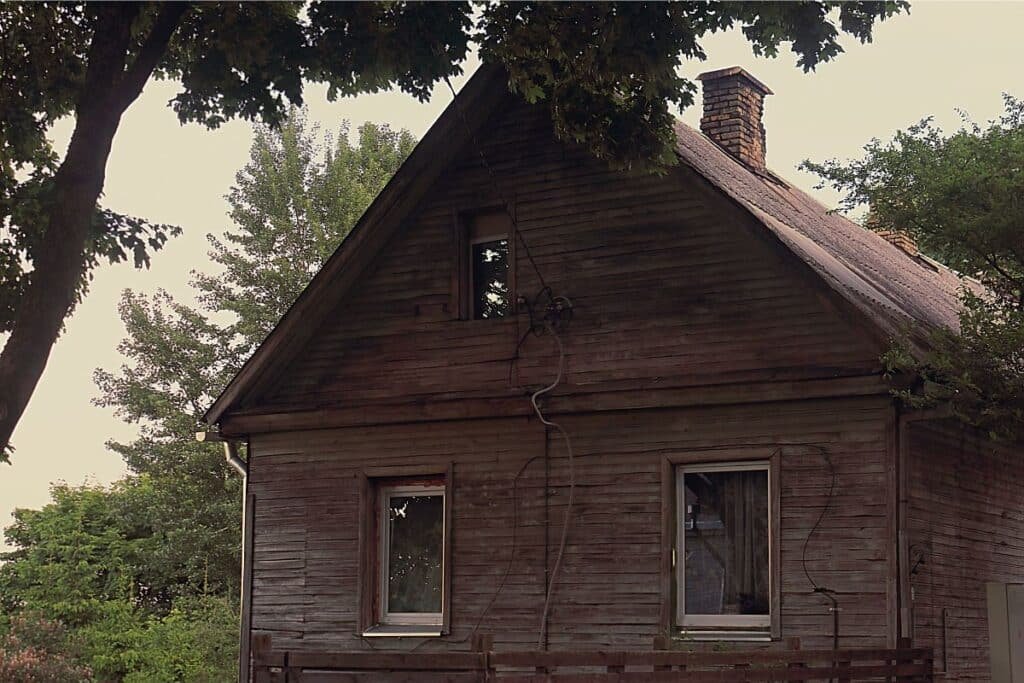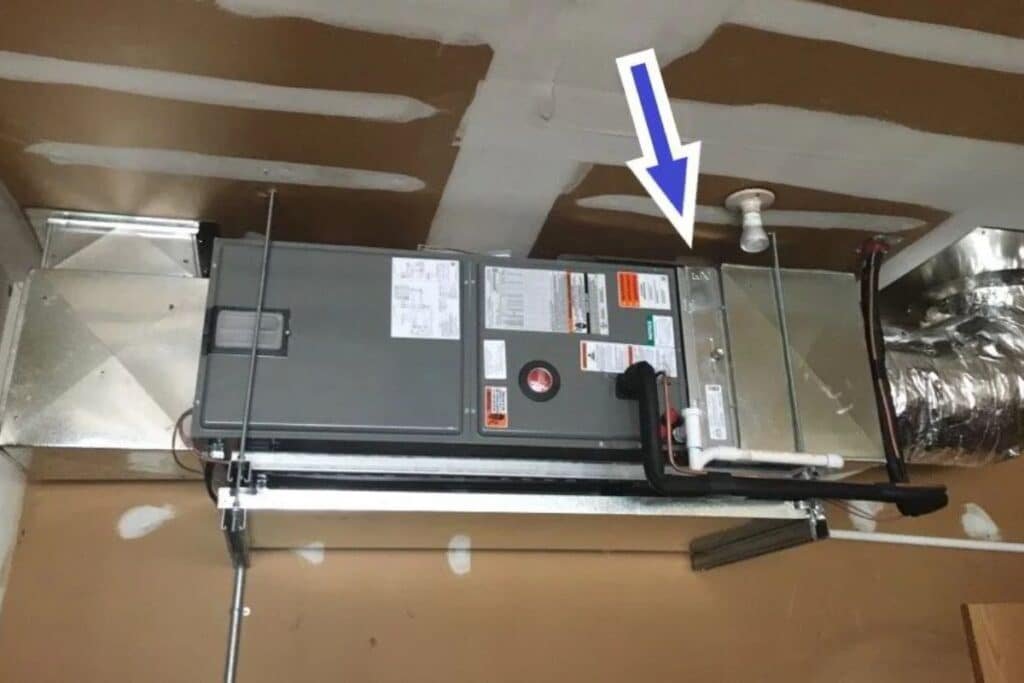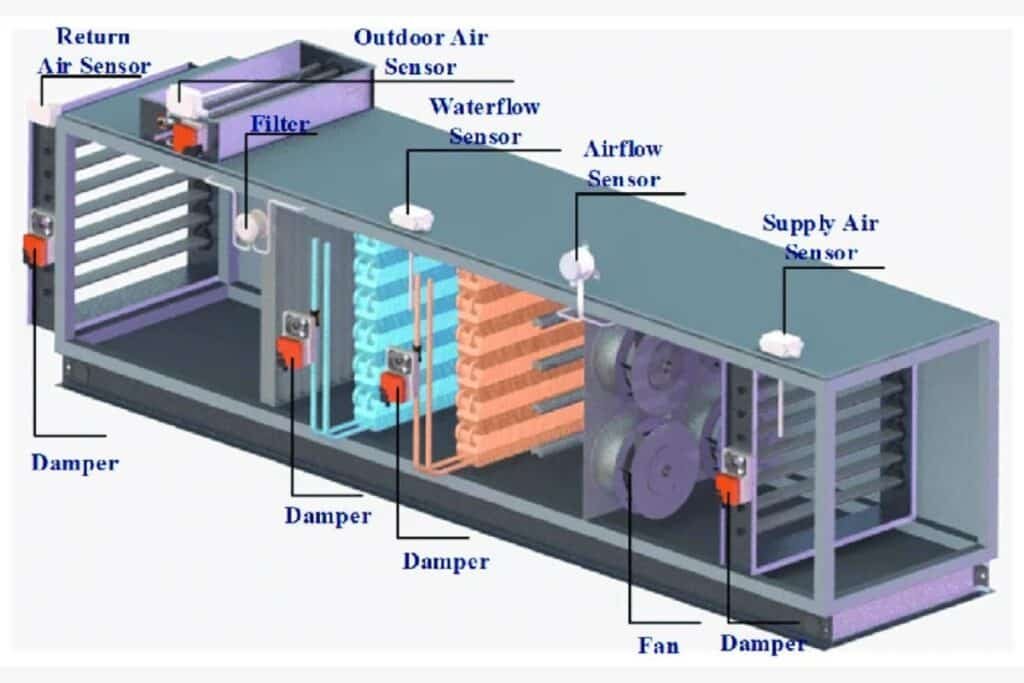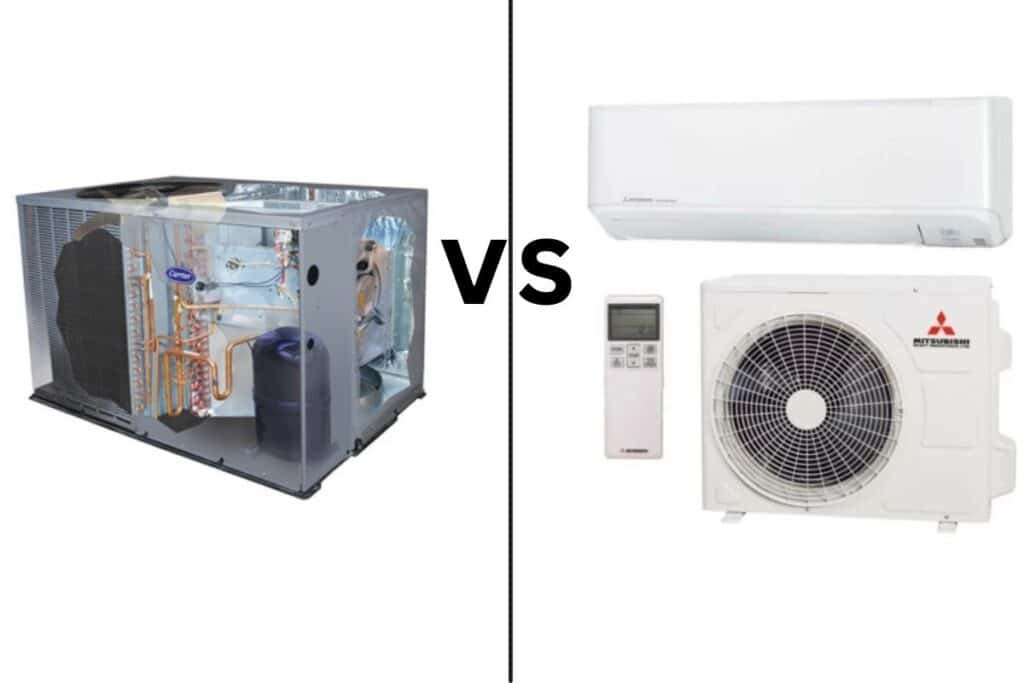A commercial HVAC maintenance checklist ensures your system runs smoothly. It helps to prevent breakdowns, saves energy and reduces operating costs. This guide explains why having a checklist is essential for keeping your business efficient.
We will cover important factors like system type, building size, and usage frequency. You will also see how seasonal changes impact maintenance and why following regulations is crucial. By the end, you will know how to build a checklist that keeps your HVAC system in top condition year-round.
What is a Commercial HVAC Maintenance Checklist?
An HVAC maintenance checklist is a list of tasks designed to keep heating, ventilation and air conditioning systems running smoothly. It ensures each component works efficiently, preventing sudden breakdowns. This checklist helps any business to maintain a comfortable environment while reducing energy costs and extending the life of HVAC systems.
Why is an HVAC Maintenance Necessary?
An HVAC maintenance checklist is essential for ensuring peak system performance. It minimizes unexpected repairs, improves air quality and helps with energy savings. Regular maintenance will help to keep your operations running smoothly, preventing costly shutdowns. A well-maintained system also promotes a healthy indoor environment for employees and customers.
Factors to Consider Before Creating a Commercial HVAC Maintenance Checklist
When making an HVAC maintenance checklist, you should consider the system type, building size, usage, seasons, rules and of course the budget. A well-planned checklist ensures smooth performance and fewer breakdowns. Here are the six factors that you should consider:
1. System Type
Not all HVAC systems are the same and their maintenance needs can vary significantly. For example, a single split system requires regular filter changes and individual unit inspections, while VRF systems demand more advanced checks, like refrigerant monitoring and ensuring system-wide performance balance. It is essential to customize the checklist to match the system’s specific components, such as compressors, ducts, or thermostats. Knowing your system type helps you plan the right inspections and services. This keeps your equipment in good shape and avoids unnecessary damage.
2. Building Size
The size and layout of the building play a major role in HVAC maintenance. Larger buildings, like warehouses or multi-floor offices, usually have multiple zones and complex duct systems. These require regular inspections to catch blockages and keep everything running efficiently. In comparison, smaller facilities may only need basic upkeep, such as filter changes and thermostat calibration. The larger the system, the more extensive the checklist will need to be to avoid missing key areas.
3. Usage Frequency
Systems that run non-stop, like in hospitals, restaurants, or data centers, deal with more wear and tear. They need frequent maintenance to stay reliable and prevent sudden breakdowns. Daily or round-the-clock operation can lead to faster degradation of parts, such as belts, filters, and coils. For such environments, your maintenance checklist should include monthly or bi-monthly filter changes, frequent coil cleaning, and routine lubrication of motors. On the other hand, systems with moderate use (like those in office spaces) can follow a more standard quarterly or semi-annual schedule.
4. Seasonal Changes
Your maintenance checklist must adapt to seasonal shifts to keep the HVAC system running efficiently all year long. For example, during spring and summer, AC units need refrigerant level checks, condenser coil cleaning, and thermostat recalibration to meet cooling demands. In fall and winter, furnaces and heating elements need burner cleaning and fuel lines checked. It’s also important to test carbon monoxide detectors to keep everything running safely and efficiently. Seasonal maintenance helps the system perform optimally and avoids breakdowns during temperature extremes.
5. Compliance with Regulations
Regulatory compliance is critical, especially for commercial HVAC systems. Many states have strict rules regarding refrigerant handling, air quality and safety standards. For example, regular inspection of refrigerant systems ensures you are meeting EPA guidelines to prevent harmful emissions. Fire safety codes may also require routine inspections of HVAC fire dampers and alarms. Keeping accurate records of your maintenance activities is essential to show compliance during audits or inspections.
6. Budget and Resources
Creating a practical checklist means balancing thorough maintenance with your available budget and staff. It is essential to determine which tasks can be handled in-house (such as changing filters) and which need professional technicians (like refrigerant recharges or electrical inspections). Consider scheduling preventive maintenance contracts with HVAC specialists to stay within budget while ensuring high-quality service.
Benefits of Preventive HVAC Maintenance
Preventive HVAC maintenance spots issues early, cuts repair costs, lowers energy bills and keeps the space comfortable. It also improves air quality, creating a healthier space for everyone. This makes the environment more comfortable and pleasant to be in. At the same time, it ensures the system runs smoothly without unexpected problems. Here are six benefits of HVAC Maintenance:
- Stops Big Problems Early: Routine checks catch small issues before they turn into costly repairs or sudden breakdowns, which keeps operations running smoothly.
- Cuts Repair Costs: Staying on top of maintenance avoids emergency fixes and saves money in the long run. A small investment in regular upkeep will save you from bigger expenses later.
- Makes Your System Last Longer: Equipment that’s properly maintained works more efficiently and lasts years longer. It helps to reduce the need for replacements.
- Lowers Energy Bills: Clean filters, smooth-moving parts and well-tuned systems use less energy. It keeps your utility bills in check.
- Keeps Everyone Comfortable: A reliable HVAC ensures consistent indoor temperatures. It makes sure employees and customers stay comfortable year-round.
- Improves Air Quality: Regular cleaning helps remove dust, mold and allergens. It creates a healthier space for everyone inside. This is especially important for offices, restaurants, and retail spaces.
Commercial HVAC System Maintenance Checklist by Season
Seasonal HVAC maintenance ensures smooth operation all year. Spring and summer focus on cooling with coil cleaning and refrigerant checks, while fall and winter prioritize heating with burner inspections and thermostat adjustments. Following these seasonal tasks improves efficiency, reduces energy costs, and prevents breakdowns during peak seasons.
Spring and Summer HVAC System Maintenance Checklist
Your technicians handle key HVAC maintenance, including cleaning air conditioners, to get the system ready for the warmer spring and summer seasons. This ensures smooth performance, reduces breakdown risks and keeps spaces cool and comfortable when it’s needed mos
- Clean or Replace Air Filters: It ensure proper airflow and reduces strain on the system.
- Inspect and Clean Condenser Coils: Improve cooling efficiency by removing dirt buildup.
- Check Refrigerant Levels: Add refrigerant when needed to keep the system working well. Low levels can make the air conditioner struggle to cool properly, leading to discomfort and higher energy use.
- Inspect Fan Blades: Look for damage or debris to prevent uneven airflow.
- Calibrate Thermostat Settings: Confirm cooling settings are accurate for optimal performance.
- Clear Drainage Lines: Remove clogs to prevent water buildup and leaks.
- Lubricate Moving Parts: Reduce friction to keep motors running smoothly and extend their life.
- Inspect Ductwork: Check for leaks or blockages to maintain consistent airflow.
Fall and Winter HVAC System Maintenance Checklist
Your HVAC team checks and tunes your heating system to ensure it’s ready for winter. These essential steps help prevent breakdowns, keeping your space warm when temperatures drop.
- Change or Clean Air Filters: Keep airflow steady and indoor air quality high.
- Inspect and Clean Heat Exchangers: Prevent buildup that can lower heating efficiency.
- Check Fuel Connections and Gas Pressure: Ensure safe and efficient operation.
- Test Thermostat Settings: Confirm that the heating is calibrated correctly for cold weather.
- Clean Burners: Promote efficient combustion and prevent energy waste.
- Inspect Carbon Monoxide Detectors: Replace batteries to keep safety systems active.
- Listen for Unusual Noises: Detect and address potential mechanical issues early.
- Insulate Exposed Pipes: Protect pipes from freezing and bursting during cold weather.
Common Commercial HVAC Systems
Commercial HVAC systems cater to diverse needs. Single and multi-split systems offer flexibility for smaller or multi-zone spaces. VAV adjusts airflow to save energy, while VRF enables simultaneous heating and cooling. CAV ensures steady climates and heat pumps provide eco-friendly comfort in moderate conditions. Here is the breakdown of Common commercial HVAC systems:
- Single Split System: This system is ideal for smaller spaces, providing heating and cooling to individual rooms. Each area operates independently, making it energy-efficient for targeted spaces.
- Multi-Split System: Multi-split systems connect several indoor units to one outdoor unit, saving space. They work well in larger buildings with multiple rooms needing individual climate control.
- Variable Air Volume (VAV) System: A VAV system adjusts airflow based on room requirements, improving energy efficiency. It’s popular in office buildings where different zones need varying temperatures.
- Variable Refrigerant Flow (VRF) System: VRF systems allow simultaneous heating and cooling across different rooms. They are energy-efficient and ideal for buildings with varying climate needs.
- Constant Air Volume (CAV) System: CAV systems maintain consistent airflow and are suitable for spaces requiring stable temperatures. They work well in warehouses and manufacturing facilities.
- Heat Pump System: Heat pumps transfer heat from one area to another, offering both heating and cooling. They are energy-efficient and work well in moderate climates.
Conclusion
Creating and following an HVAC maintenance checklist helps you to avoid sudden breakdowns, saves energy and keeps your system working efficiently. You can customize the checklist to fit your needs by focusing on key factors like system type, building size and usage,
Seasonal adjustments and regular inspections will ensure that your system stays in top condition throughout the year. Following regulations also keep your business compliant and safe. The right checklist eliminates downtime, lowers repair costs, and keeps your indoor space comfortable year-round. It also helps your HVAC system to run smoothly and reduces surprises.
Frequently Asked Question
How to Maintain a Commercial HVAC System?
Maintaining a commercial HVAC system involves regular cleaning and inspections to keep it running smoothly. Key steps include:
- Replace air filters every 1-3 months.
- Clean coils and ducts to maintain airflow.
- Check refrigerant levels to ensure efficient cooling.
- Lubricate motors and moving parts to avoid friction.
Inspect belts, pulleys, and electrical connections regularly.
Scheduling professional service twice a year helps identify potential issues early and prevents breakdowns.
What is HVAC Maintenance?
HVAC maintenance means checking your heating, ventilation, and air conditioning system regularly to keep it working smoothly. It’s like changing the oil in your car. Simple tasks like replacing filters, cleaning parts, and testing the thermostat help the system run efficiently. They also improve air quality and prevent unexpected breakdowns.
What is the Checklist When Servicing HVAC?
Here’s what you typically want to check during HVAC servicing:
- Replace or clean air filters to improve airflow.
- Clean the coils to keep the system running efficiently.
- Check refrigerant levels and look for leaks.
- Inspect the thermostat to ensure accurate temperature control.
- Examine ducts for blockages or leaks.
- Lubricate motors and other moving parts to prevent wear.
- Secure electrical connections for safety.
Following this checklist keeps your system in top shape and helps avoid surprise repairs.
What is Annual Maintenance on an HVAC System?
Annual maintenance makes sure your HVAC system is ready for both hot and cold seasons. In the spring and summer, the focus is on cooling, that’s why technicians will clean coils, check refrigerant and ensure the AC is working efficiently. In fall and winter, the focus shifts to heating, so it’s essential to inspect burners, check the heat exchanger, and adjust the thermostat. These steps ensure the system runs efficiently and provides reliable warmth throughout the colder months.
How Often Should HVAC Maintenance Be Done?
The general rule is to get HVAC maintenance twice a year. Once in the spring and once in the fall. This keeps your system ready for both summer and winter. If your system runs constantly, like in hospitals or busy restaurants, you might need more frequent check-ups to prevent wear and tear. Regular filter changes every 1-3 months are also a good idea to keep the air clean and the system efficient.
